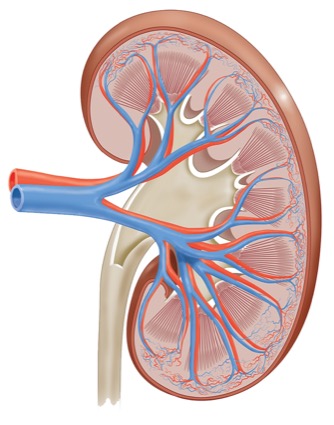One of the first studies of its kind has concluded that interleukin-18 (IL-18) appears to be a specific biomarker of serious kidney damage in patients with alcoholic hepatitis. The investigation also found that cystatin-C and lipocalin-2 (NGAL) may identify greater risk for three-month mortality in these patients.
These biomarkers, the researchers say, represent a novel clinical tool for the management of alcoholic hepatitis, which might spare these patients from kidney-damaging tests.
“We have previously shown that acute kidney injury [AKI] is a common complication in patients with alcohol-associated hepatitis and can negatively impact short-term survival,” said Ramon Bataller, MD, PhD, the chief of hepatology at UPMC in Pittsburgh, and the senior author of the study. “Nevertheless, no study has yet to characterize the biological and clinical features of AKI in the setting of alcoholic hepatitis, so our goal was to characterize AKI in patients with alcoholic hepatitis compared to other liver diseases, which would help us to potentially identify prognostic biomarkers.”
Bataller and his colleagues enrolled 91 patients into the trial: 67 with probable or definitive alcoholic hepatitis; 19 with decompensated cirrhosis of a different etiology, with and without AKI; and five healthy controls. A series of serum and urine biomarkers from each patient was then analyzed, including sodium, potassium, total protein, cystatin-C, IL-18, IGFBP-7, LFABP, NGAL, KIM-1, TIMP-1, TIMP-2, TIMP-3 and TIMP-4.
The researchers compared biomarker levels between phenotypes, assessed the correlation between serum and urine biomarkers, and assessed the ability of each biomarker to predict survival.
Reporting the findings at the 2020 digital Liver Meeting (abstract 248), Bataller said the development of AKI in patients with alcoholic hepatitis was associated with higher concentration of urine potassium. Of the studied biomarkers, urine NGAL, IGFBP-7, KIM-1, LFABP, TIMP-1 and TIMP-2 were found to differentiate patients with AKI and those without renal disease (P<0.01 for all). The performance of TIMP-1 and TIMP-2 was significantly better in patients with alcoholic hepatitis than in those with decompensated cirrhosis with and without AKI, he noted.
“Most of the biomarkers that have been proposed to be useful in detecting cirrhosis are also valid to identify renal failure in alcoholic hepatitis,” Bataller said.
Urine IL-18 was exclusively increased among patients with alcoholic hepatitis, and identified those with AKI (P<0.001). Serum IL-18 was slightly higher in patients with alcoholic hepatitis than in those with decompensated cirrhosis (P<0.05). No correlation was found, however, between serum and urine IL-18 among patients with alcoholic hepatitis, according to the researchers.
“This suggests that IL-18 in urine could be a biomarker of alcoholic liver disease—either alcoholic cirrhosis or alcoholic hepatitis—but it is never increased in patients without alcoholism,” Bataller told Gastroenterology & Endoscopy News.
Among all the urinary biomarkers, NGAL predicted three-month survival with the best performance (area under the curve [AUC] 0.70). Serum cystatin-C yielded similar predictive accuracy (AUC 0.72). None of the remaining biomarkers alone demonstrated comparable performance, Bataller said.
The findings may help clinicians in the care of individuals with alcoholic hepatitis, Bataller said.
“With biomarkers of renal failure that are more sensitive than creatinine, we may be able to identify earlier those patients with initial kidney damage,” he said. “That may also help us to offer volume expansion in these patients with albumin, while simultaneously avoiding tests like CT scans and MRI, where contrast dye can damage the kidneys. It will also allow us to better monitor kidney disease in these patients.”
Ashwani K. Singal, MD, MS, an associate professor of medicine at the University of South Dakota Sanford School of Medicine, in Vermillion, said he was impressed with the translational study, although he said more research is needed given the relatively small sample size.
Singal stressed that it will be important to determine whether the relationship between IL-18 and AKI is merely an association or whether IL-18 can be used to predict AKI. “It would be quite powerful to have a biomarker that can predict which patients are going to develop AKI, because then you can initiate treatment early on,” he said.
Singal added that IL-18 may also prove a useful adjunct to an AKI risk score that he, Bataller and their colleagues developed several years ago (Liver Transpl 2018;24[12]:1655-1664). “It would be interesting to see if IL-18 is superior to the clinical score we developed or if it can be incorporated into that formula,” he said. “Because if we can improve the accuracy of that scoring system by adding this biomarker, then it will be more relevant clinically.”
—Michael Vlessides
Bataller and Singal reported no relevant financial disclosures. Singal is a member of the editorial board of Gastroenterology & Endoscopy News.
This article is from the May 2021 print issue.


